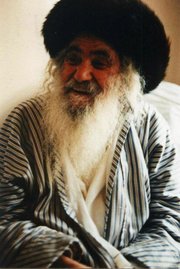Postmortem circumcision
I found a strange comment on the FailedMessiah blog.
POSTMORTEM CIRCUMCISION???
So I did some googling, and the best I could find is this abstract - which frankly sounds fascinating. I wish I could find the paper.
By the way as a member of a chevra kadisha - we do have postmortem circumcisions and the 9 kavim of water poured upon the meit are in place of a mikva, and we do have 3 people performing the tahara who are shomrei shabat and mitzvot - kind of sounds like a conversion after the fact.
POSTMORTEM CIRCUMCISION???
So I did some googling, and the best I could find is this abstract - which frankly sounds fascinating. I wish I could find the paper.
Postmortem Circumcision, Baptism, and Jewish-Christian Polemics
Twelfth and thirteenth-century Hebrew texts describe a seemingly obscure
custom: When a male Jewish infant died before he reached his eighth day
and before the corpse was buried, the dead infant was circumcised at the
open gravesite. Postmortem circumcision became a common custom
throughout the high Middle Ages, as discussions of the custom in various
Hebrew books of law and practice reveal. While there are some cursory
scholarly discussions about the origin and significance of the custom, no study
has been devoted to exploring fully the role and the function of postmortem
circumcision or has investigated its widespread acceptance in medieval Jewish
culture. I posit that the popularity of the custom responded to contemporary
medieval concerns about the fate of infants in the afterlife. The circumcision
of stillborn infants reflected the Jewish belief in the redemptive efficacy of
circumcision. Jews contrasted—particularly in the context of Jewish-Christian
polemics—the redemptive merits of circumcision with the shortcomings of
baptism: While postmortem circumcision enabled marking dead infants as
legitimate members of the Jewish community, baptism could only be effective
when performed before the infant died. Jewish perceptions of the superiority
of postmortem circumcision over baptism contributed as well to the appeal of
the custom. Exploring the significance and appeal of postmortem
circumcision, the paper will first trace the roots of the custom. The custom is
mentioned for the first time in a text written by one of the Gaonim of Babylonia
(early Middle Ages), that is to say in a non-Christian environment. However,
Jewish authorities living throughout Christian Europe in the high Middle Ages
reframed the custom’s rationale, associating it with intercession for the dead
and the afterlife.


2 Comments:
There are other rather obvious reasons, too: This is how new mohels learn their trade. Who would let someone do their first on their baby?
More important, since names are traditionally given together with the circumcision and the person (not necessarily a baby) needs a name for memorials/ yizkor prayers, etc., they make the bris and give a name.
In general, Jewish law is "standardized", so since sometimes a person can be of some age and circumcized, the rule becomes to do it for all, and thus it is done for even babies born in childbirth, although in those cases the name is given by the burial socity and is something innocuous that the parents would not use for a later child. I know a case where they named the baby "Yeled".
Yossi Ginzberg
Thanks, Yossi! Fascinating...
Post a Comment
<< Home